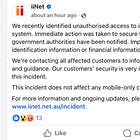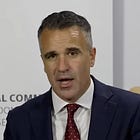Philippines Should Adopt Mandatory Military Service for All Citizens at 18
It was amusing to watch farmers and residents in a small farming community in a northern province marching while holding sticks and stones in their hands. “Patpat (sticks), Bato (stones)” bawled the drill sergeant as a platoon of citizen soldiers marched under a sweltering sun in an open field in a military base in Cagayan province way back in the 1990s.
At that time, the military was pursuing a rogue politician, a former Constabulary colonel, who led a short-lived rebellion against the late President, Corazon Aquino, whom he accused of being a pro-Communist leader. In the three months that the Philippine Marines were operating in the mountains in Cagayan, they failed to arrest or capture Rodolfo Aguinaldo.
He was protected by an indigenous tribe that formed part of his army. It was the Maoist-led New People’s Army rebels that cornered and assassinated Aguinaldo years later. The military had found armed civilians an important part of village defenses, especially in some remote and isolated areas, because the Armed Forces and Police are thinly spread.
They were not only effective against the NPA rebels, but they became part of the government’s holistic counterinsurgency strategy. The late President, Fidel Ramos, when he was the Armed Forces chief of staff, and the defense secretary later pushed the C-H-C-D strategy in fighting the rebels. The strategy stands for Clear-Hold-Conslidate-Develop to prevent rebels from returning to small communities.
The citizens' army played a big role in the “holding and consolidating” phases to prevent the rebels from returning to the “cleared” communities. When Aquino took over, it was at the height of communist insurgency with more than 25,000 armed guerrillas in more than 100 guerrilla fronts, affecting a fourth of the country’s 40,000 villages. When Ramos succeeded Aquino, the NPA strength went down to a little over 6,000 armed guerrillas.
Under Ferdinand Marcos Jr, the rebels’ numbers dwindled to less than 1,000 armed members, concentrated in Samar, Davao area, Negros and Masbate islands. recruiting as part of territorial forces The more professional military training for a citizen’ soldiers began when Aquino was swept to power in a near bloodless “People Power” uprising in 1986. The military had to reform the paramilitary group, Civilian Home Defense Forces (CHDF), after it earned a brutal reputation as human rights violators under the dictatorship.
There were more rights abuses attributed to the CHDF than to regular soldiers from the Army, Navy, and Air Force. The military’s law enforcement arm, the Constabulary, also had a bad human rights record. Thus, the military transformed the CHDF into what is now known as Citizens’ Armed Forces Geographical Unit (CAFGU), a force multiplier deployed in remote communities nationwide to defend villages against internal security threats from Maoist-led New People's Army (NPA) rebels and other lawless groups. By night, the CAFGU members patrol villages and man outposts, but they were farmers, fisherfolks, and ordinary residents by day.
These part-time soldiers, who were paid a monthly subsistence allowance, undergo rigid military training and subject to the military justice system. A CAFGU member can be court martialled and subject to harsher punishments under military laws. The military professionalized the citizens’ army as the backbone of the reserve force, which can be called to active duty in case of national emergencies, such as conflicts and disasters.
Truth matters. Quality journalism costs.
Your subscription to Mencari (Australia) directly funds the investigative reporting our democracy needs. For less than a coffee per week, you enable our journalists to uncover stories that powerful interests would rather keep hidden. There is no corporate influence involved. No compromises. Just honest journalism when we need it most.
The Philippines has a large pool of military reservists, but it lacks regular training, unlike in other countries, like Israel, Singapore, and South Korea. All men in Singapore undergo mandatory military service for two years upon reaching the age of 18. South Korea has a similar law, unlike in the Philippines, where only university students have the option to undergo a two-year Reserve Officers Training Course (ROTC) while in school.
The ROTC is done during weekends. In Singapore and South Korea, the young men were conscripted for two years until they were discharged from military service. In the US, young men volunteer to enlist in the military or the National Guard. Only the professional soldiers, the officers’ corps, and senior non-commissioned officers stay longer in the military service. In the Philippines, the military service is a livelihood as both the officer corps and NCOs serve for more than 30 years. No wonder some CAFCU members are over 40 years old.
It is not enough for the Philippines to professionalize its citizens’ army and institute safeguards to respect human rights. The Philippines needs to develop a system similar to Singapore’s and South Korea's, where all able-bodied men and women, upon reaching 18 years old, serve in the military for two years.
The citizens’ military training instills discipline and patriotism. It also prepares the country in the face of rising threats in the region. The ROTC program in the uniciversities does not prepare young Filipinos to become real soldiers.
They have to taste a real military training, take part in exercises, and learn by heart to respect human rights to avoid abuses in the past. But the task is not as easy as asking civilians to pick up sticks and stones. It is a whole-of-nation approach with funding from Congress and a realization from all Filipinos that the defense of the country is everyone’s duty.
The opinions expressed are those of the author and do not necessarily represent the views of this publication.
Got a News Tip?
Contact our editor via Proton Mail encrypted, X Direct Message, LinkedIn, or email. You can securely message him on Signal by using his username, Miko Santos.
Sustaining Mencari Requires Your Support
Independent journalism costs money. Help us continue delivering in-depth investigations and unfiltered commentary on the world's real stories. Your financial contribution enables thorough investigative work and thoughtful analysis, all supported by a dedicated community committed to accuracy and transparency.
Subscribe today to unlock our full archive of investigative reporting and fearless analysis. Subscribing to independent media outlets represents more than just information consumption—it embodies a commitment to factual reporting.
Not ready to be paid subscribe, but appreciate the newsletter ? Grab us a beer or snag the exclusive ad spot at the top of next week's newsletter.








